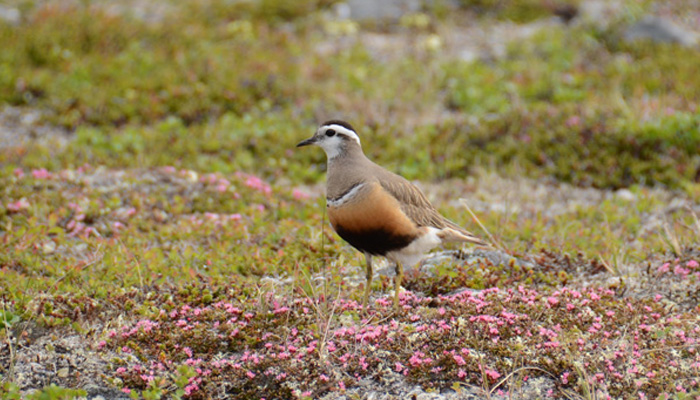
English:
Eurasian Dotterel, Common Dotterel
Russian: Хрустан
Mongolian: Урианхайн цагаанхиазат, Урианхайн сүвээ цагаан
German: Mornellregenpfeifer
French: Pluvier guignard
Japanese: コバシチドリ (Kobashi-chidori)
Body length: 20-24 cm
Breeds high in mountain areas with low cover and scree, often preferring partly
flat areas; also on open tundra. Occurs northerly
breeding sites mostly mid Jun- mid Aug. Rare on migration, often singles or in
small groups on arable or short-grass fields. Foot insects. Nest is bare scrape.
♂ does most of incubation and care of young. Some ♂♂ are extremely tame just
before eggs hatch.
Identification:
Somewhat smaller than Golden Plover, and is slightly more compact, with shorter
neck and wings and proportionately larger head with smaller bill. In all
plumages, has long white or ochrous-buff supercilium and plain upperwing with
narrow pale leading edge (white shaft to outermost primary).
- Adult summer:
Combination of orange-rusty breast, black and white breast-band and well-marked
white supercilium contrasting with dark, hindcrown makes it unmistakable; as
with phalaropes, ♀ is brighter-coloured, smarter than ♂.
- Adult ♀ winter:
Greyish breast and flanks tinged buff, with faint whitish breast-band, and
upperpart feathers and larger wing-coverts blackish-brown with neat-creamy-buff
fringes broken at tip by black central streak; underparts have on average more
obvious dark mottling on breast and upper flanks.
- 1st winter: Told by retained
juvenile wing-coverts.